Why Do Babies Need Tummy Time?
Once upon a time, babies spent long hours on their bellies, snoozing away in their cribs. Experts now know that stomach-sleeping increases an infant’s risk of sudden infant death syndrome, or SIDS; babies should be placed to sleep on their backs, with no crib bumpers, blankets, pillows or fluffy toys in the crib or bassinet, until 12 months of age. If your baby is rolling over while sleeping, you don’t need to worry – this is normal as your child grows bigger and stronger, and you do not need reposition your baby to lay on their back unless they are swaddled.
While back-sleeping is undeniably safer for babies who can't roll over on their own yet, it comes with a downside. Babies today are prone to developing flat spots on the head and tight muscles on one side of the neck. Tummy time can prevent these issues, so it’s important to do your best to position your baby on their tummy throughout the day.
It’s a great day for mom and dad when that floppy newborn can finally hold their head up without support. “Tummy time is the best way to build those neck and shoulder muscles and improve a newborn’s head control,” says Colleen Coulter, PT, DPT, PhD, PCS.
Tummy time is also good for your baby because it:
- Lays the foundation for gross motor skills like rolling, sitting and crawling.
- Supports mental and physical development, as the baby gains awareness of how to move in space and how to respond to information their brain is receiving.
- Helps prevent head flattening such as plagiocephaly, a flattening on the back or side of the skull, or brachycephaly, a flattening that is mostly straight across the back of the head.
- Helps prevent torticollis, the tightening of muscles on one side of the neck that causes the baby to hold their head in one place.

Some babies don’t mind lounging on their bellies, while others squawk and struggle. Remember, tummy time does not mean your baby has to be lying still on their tummy. It includes any activity that keeps them from lying flat in one position against a hard surface. Any time you carry or play with your baby while they are on their belly counts as tummy time.
You can keep your baby on their tummy while you’re holding, rocking, carrying, diapering and feeding them. You can let them play on a blanket on the floor or ground, but be sure they are closely supervised.
To make tummy time more enjoyable for you and your baby, try:
- Offering different toys to keep your baby’s interest.
- Talking to, tickling and just giving attention to your baby.
- Changing locations to give your baby new things to look at.
- Snuggling your baby with their tummy against your shoulder, with their face toward you.
- Lying on your back with your baby on their tummy on your chest.
- Toweling and dressing your baby while they are on their tummy, gently rolling them from side to side.
As your baby grows stronger, they’ll begin raising their head to look around. Then you can try new activities. Watch them as they watch you, and see if you can get them to raise up and turn their head.
The American Academy of Pediatrics uses a handy mantra: “back to sleep, tummy to play.” If your baby isn’t a fan of tummy time, don’t worry. Start with small doses—a couple of times a day for three to five minutes at a time. Try to build up to 20 to 30 minutes a day, throughout the day. Before you know it, your baby will be holding their head high and pushing up on their elbows and arms.
Even with tummy time, some babies might develop skull flatness or stiff necks. They are usually not harmful, but they may require physical therapy.
The best time to correct the shape of your infant’s head is during their first few months, when their skull is growing quickly. If repositioning doesn’t improve the shape by the time their 4 months old, your pediatrician may recommend a cranial remolding orthosis, also called a helmet.
The specialized clinicians in our Cranial Remolding Program can help determine if a helmet is right for your baby or if repositioning and tummy time can allow your baby to self-correct.
Carrying
- Take turns with the hip your baby straddles. This way they can look, turn and balance to the right and left in both directions.
- Carry your baby over your shoulder. Gently support their head in a centered position. Changing the shoulder your baby is carried on helps them to turn to both sides. Less support is needed as your baby gets stronger and can control their head and trunk.
- Hold your baby out in front and facing away from you. Gently keep their head centered.
- Carry your baby belly down. Make sure one of your arms is under their chest for support. Younger babies need their head and chest supported. Less support is needed as your baby gains strength in their neck and trunk muscles.
- As your baby gets stronger, you can play airplane and pretend they are flying as you carry and support them.
- Hold and carry your baby facing away from you. This helps them watch what’s going on in the room by turning their head.
- Carry your baby facing away from you on their right side. Switch and carry your baby on their left side.
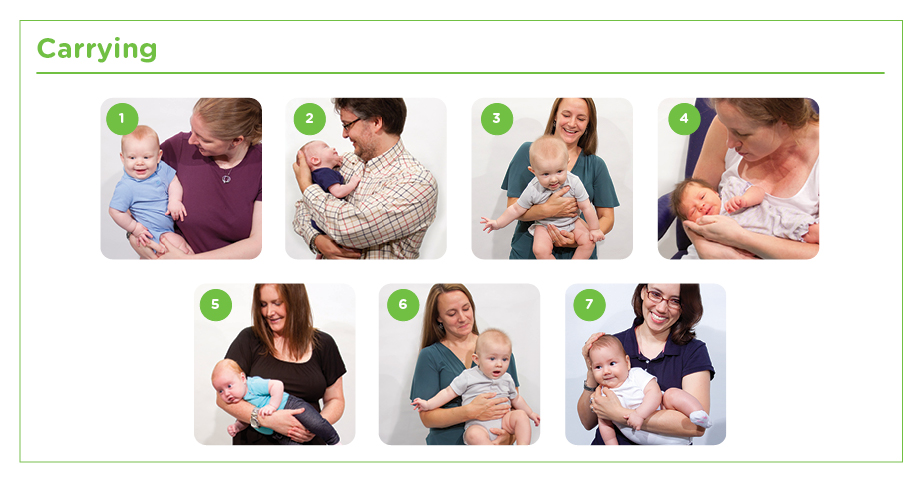
Diapering
- Always put your baby in a different position on the changing table. Roll your baby from side to side as you fasten the diaper tabs. Talk to your baby from different sides as you change their diaper.
- Change your baby’s diaper on the bed or floor with your baby facing you. This helps them keep their head centered and make eye contact with you.
- After diaper changes, roll your baby on their belly before picking them up. While supervised, let your baby play in this position for a few minutes.
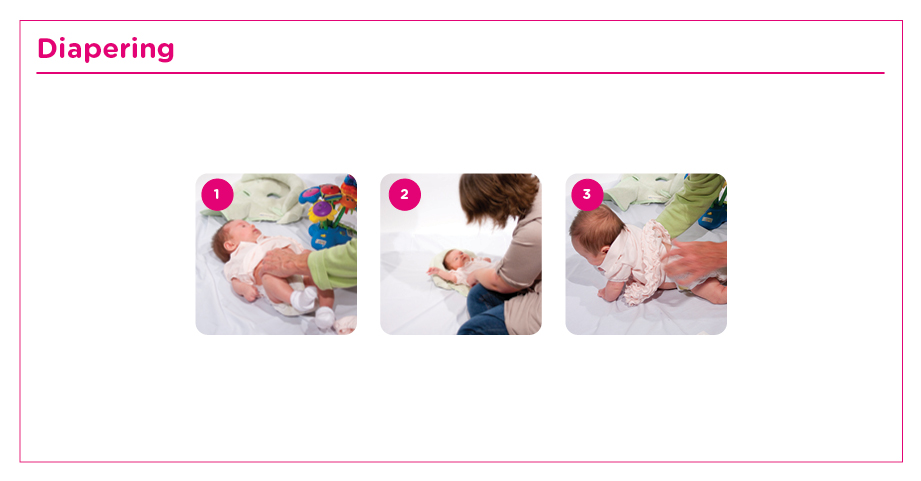
Dressing and bathing
Use the lifting, carrying and positioning activities while you dress and bathe your baby. This gives your baby more tummy time. It also adds a little fun.
- Towel dry and change your baby on their belly. Gently roll them from side to side as you put on their clothes.
- Massage your baby from head to toe after diapering and bathing.

Feeding
- Change the arm you hold your baby in for feeding. This way your baby gets to look and turn to both sides. This also limits the pressure of your arm on the back of your baby’s head. Feed your baby in one arm, then switch to the other side for the next feeding. This will help develop neck flexibility on both sides.
- Sit with your back supported and knees bent. Keep your baby against your legs, facing you. Keep your baby’s head centered while feeding them.
- Try putting your baby belly down over your lap when burping them.
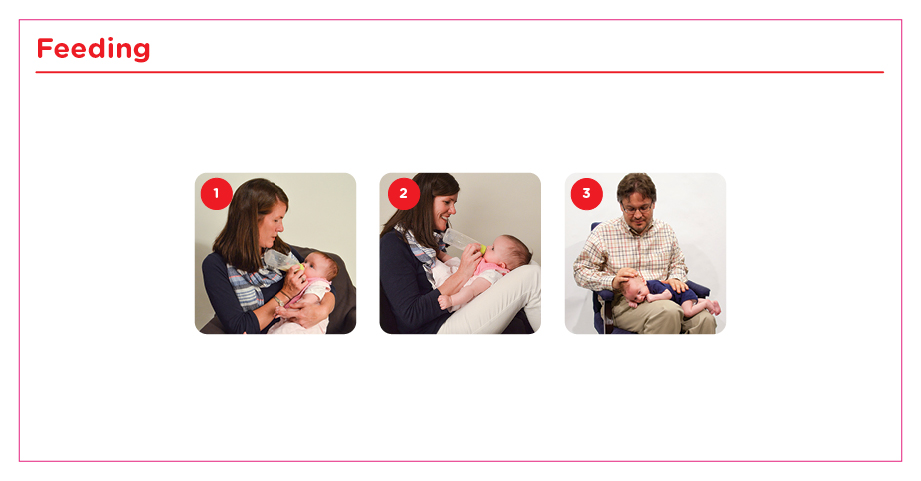
Positioning
- Change the way your baby can watch you. Make sure their head is centered instead of off to one side. Put your baby in your lap facing you. Sing, make eye contact, snuggle and center their head, as needed. Challenge your baby’s balance to both sides by tipping their body slightly to each side. Your baby will recenter their body and gain strength.
- If your car seat comes with a curved head support, center your baby’s head in it. If your car seat does not have a curved head support, the American Academy of Pediatrics says to use a rolled blanket or towel. This can be put along the side of your baby’s head and shoulders while he is in the car seat. This keeps your baby from leaning to one side and helps keep their head and body in the middle. Do not put pads or cushions under or behind your baby while they are in the car seat and riding in a vehicle. Be sure to remove any added positioning supports under or behind the child before driving. You can buy additional head supports only intended for use in baby carriers, swings and strollers. Do not use these added supports in car seats while the child is riding in a vehicle.
- Put fun and interesting mobiles or toys on both sides of your baby. This gets them to turn in both directions while on their tummy or back. Change the side your baby lies on, even if they like one side more than the other.
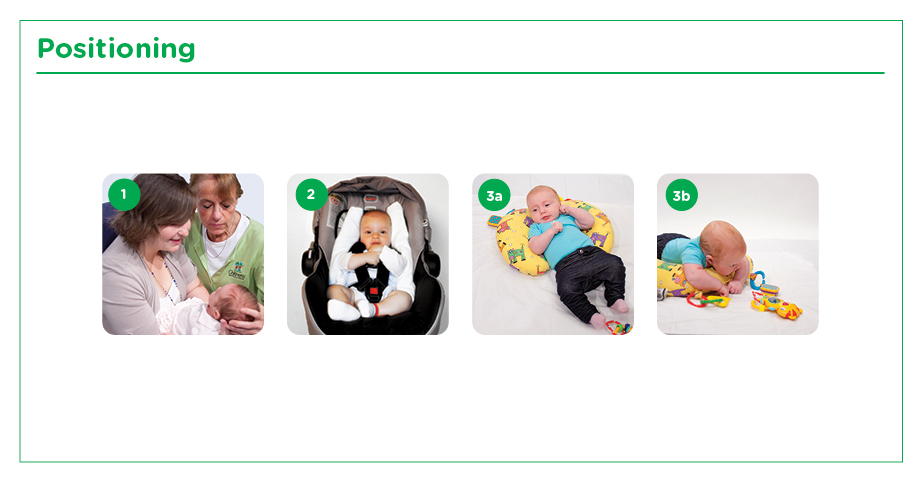
Positions for play
- A great way to have tummy time with your baby is to lie on your back and hold your baby on your chest facing you. This helps your baby to lift their head to look at you. Gently turn your baby’s head to both sides. Less support is needed as your baby grows. Your baby will begin to keep their head centered and push up on their arms.
- Put a pillow, small towel or blanket under your baby’s chest. This helps them lift and center their head.
- Play with your baby on the floor. Put toys on both sides of them to get them to turn their head and reach with both hands. Playing with your baby helps them be more comfortable around other people.
- Put your baby over your lap. Raise one of your legs higher to make it easier for them to lift their head.
- Sit on the floor with your baby. Play with toys centered in the middle, then to each side.
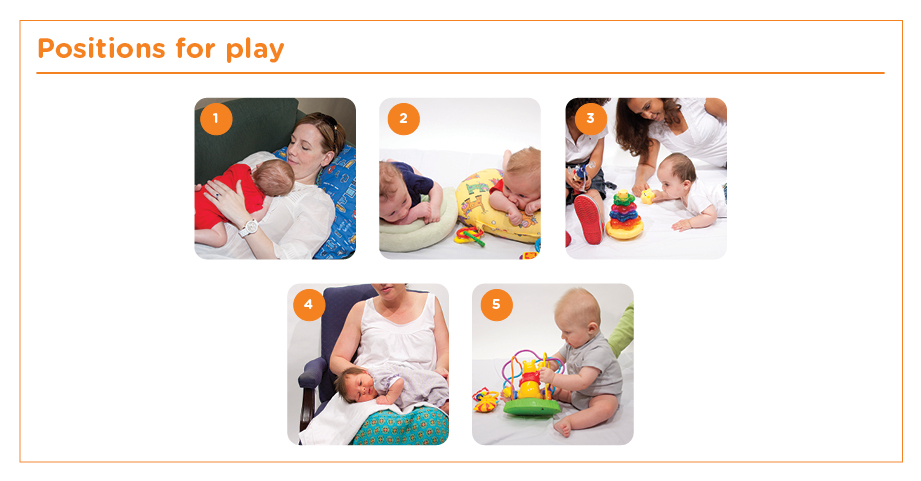
Sleeping
- Put your baby on their back to sleep. They should be at the opposite end of the crib every other night. Keep a calendar by the crib to remind you to change your baby’s direction.
- Turn your baby’s head to the opposite side each night to keep it from getting flat spots.

Snuggle time
Lay your baby against your shoulder facing you or gently swaddled in your arms. This is snuggle time. This helps your baby to lift their head to look at you. Support and center their head, and turn it gently both ways.
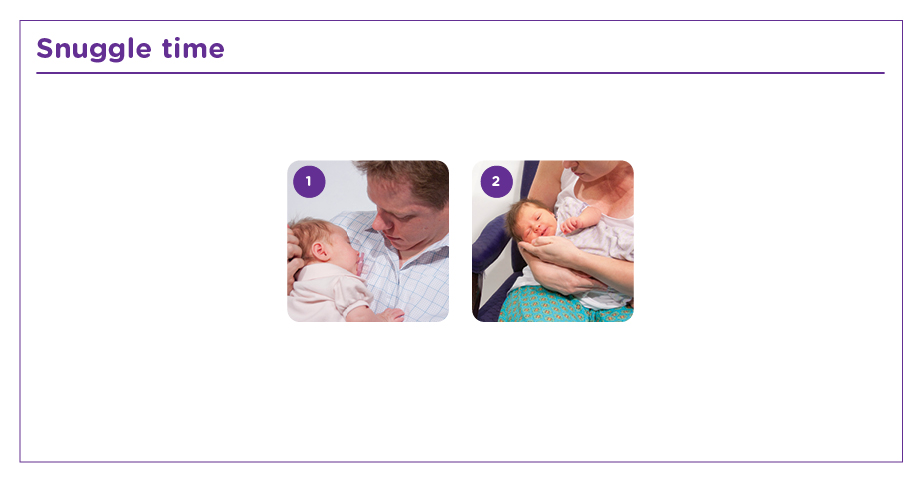
More activities
- Sit your baby on your lap, facing you. Give support as needed. Help your baby hold their head up and centered. Turn their head equally to both sides. This is a good position for feeding.
- Lie on the floor with your baby. Make sure you are face to face. Help your baby push up on their elbows to lift their head to look at you.
- Make sure you support your baby under their chest. This makes lifting their head in the middle easier.
- Put toys in front of your baby while they are lying on their belly. This helps them reach and play with both hands. Your baby may prop up on both arms and move around the floor on their belly. They may also crawl from this position.
- While watching TV or visiting with friends, put your baby on their tummy over your lap. Change your baby’s position to help them look to both sides.
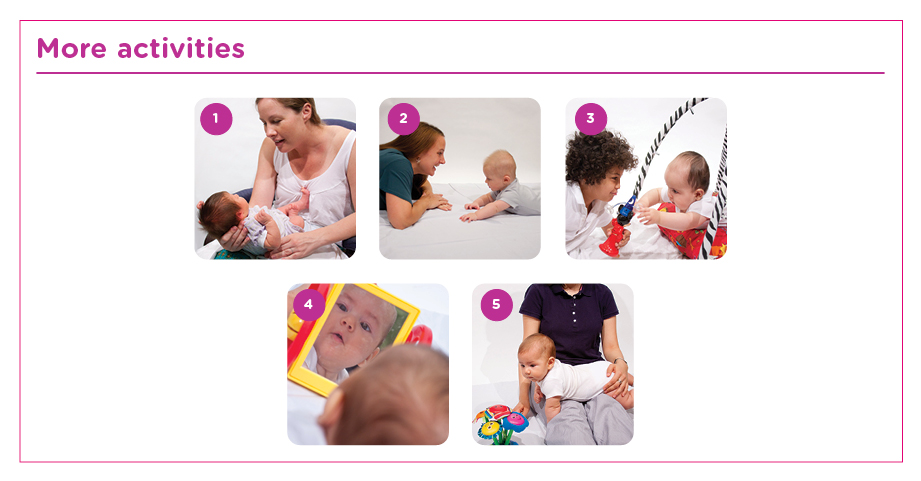
Other ways to help with head shape
Some babies may have flattening or asymmetry to their heads even after a program as active as tummy time. If your baby’s head shape does not get better after they are 4 months old, your pediatrician may send your child to:
- A doctor who specializes in the skull.
- A professional called an orthotist, who can make a special helmet to help shape your baby’s head.
- This helmet is called a cranial remolding orthosis. Your baby wears it 23 hours a day. It gently helps your baby’s head have a more normal shape.
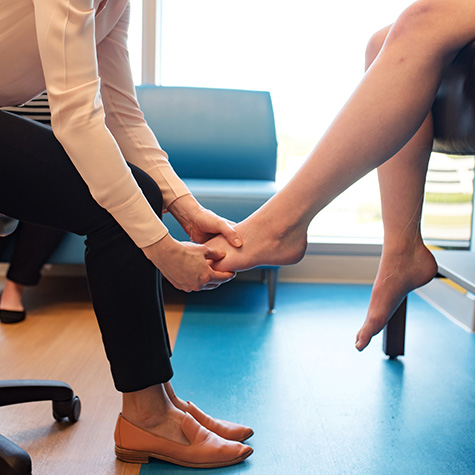
Our pediatric bone specialists know how to treat bone disease in growing kids and teens.
We work closely with our endocrinology bone health specialists to offer your child comprehensive care. When it comes to bone health, it’s important to remember that children are not just small adults. Kid bones differ from adult bones in significant ways, and that’s why they need our care.
Learn MoreAnswers to Your New Parent Questions
This content is general information and is not specific medical advice. Always consult with a doctor or healthcare provider if you have any questions or concerns about the health of a child. In case of an urgent concern or emergency, call 911 or go to the nearest emergency department right away. Some physicians and affiliated healthcare professionals on the Children’s Healthcare of Atlanta team are independent providers and are not our employees.
Contact Us 404-785-3229


